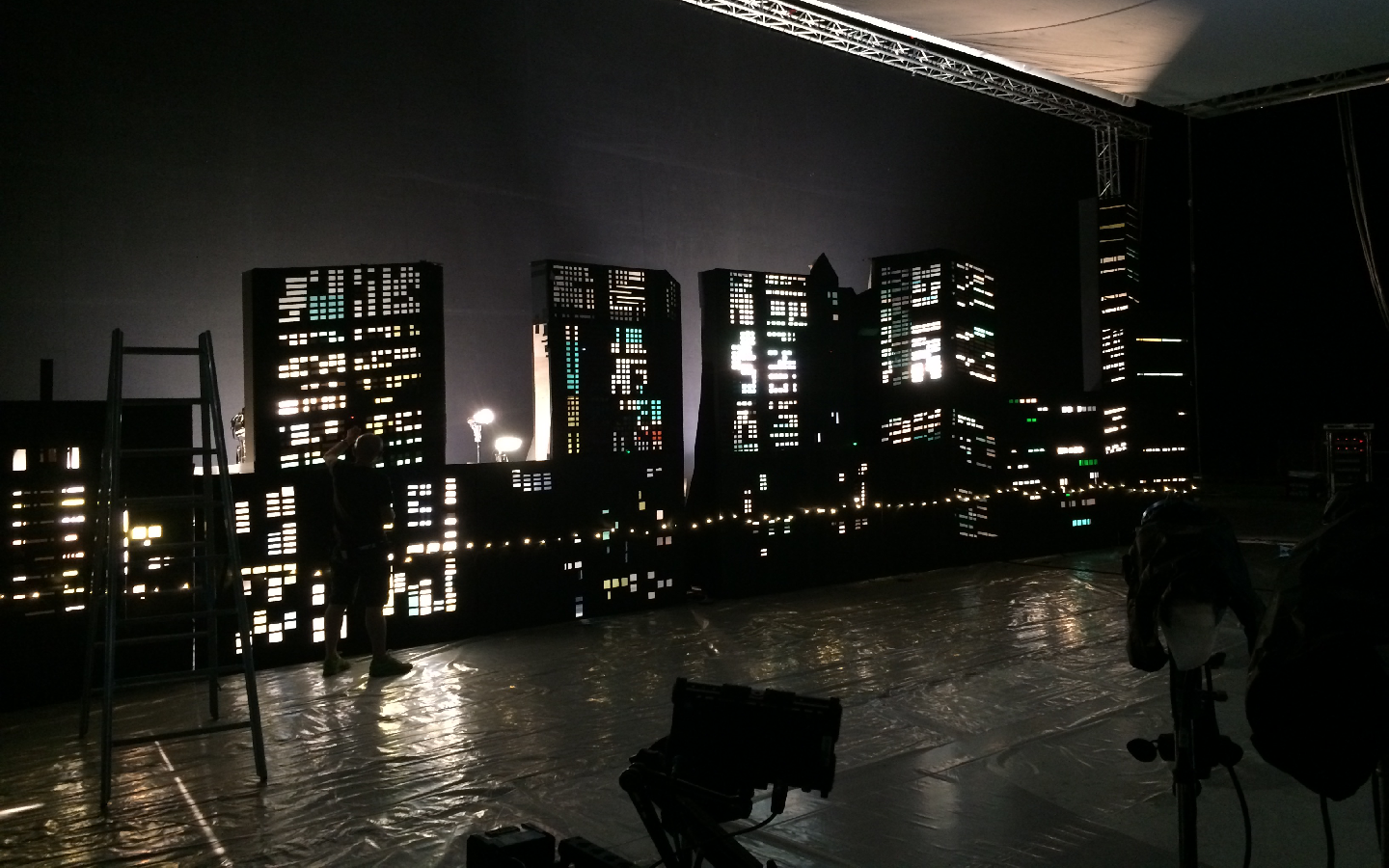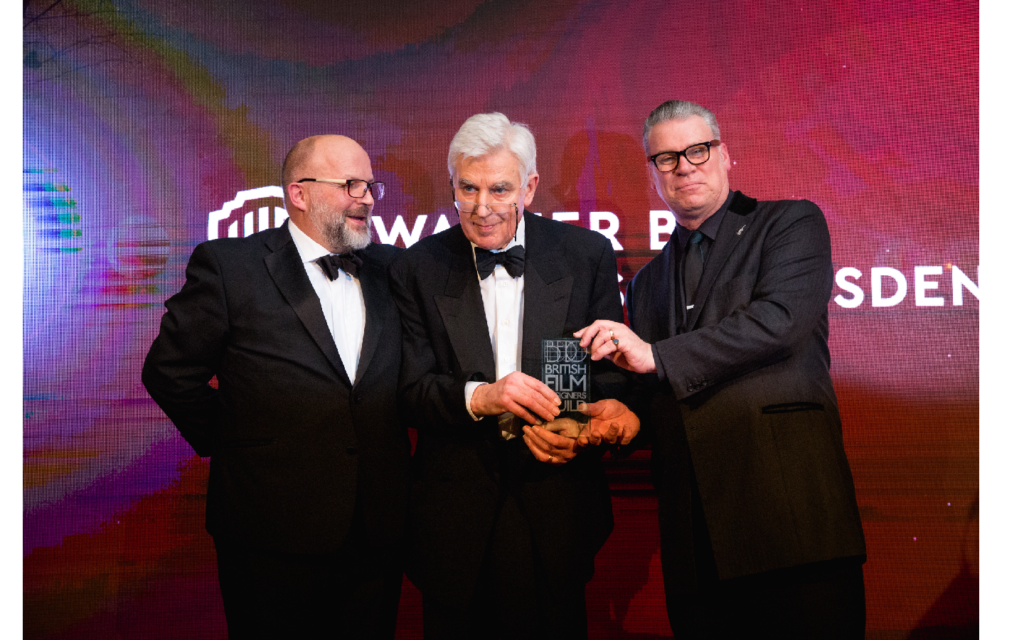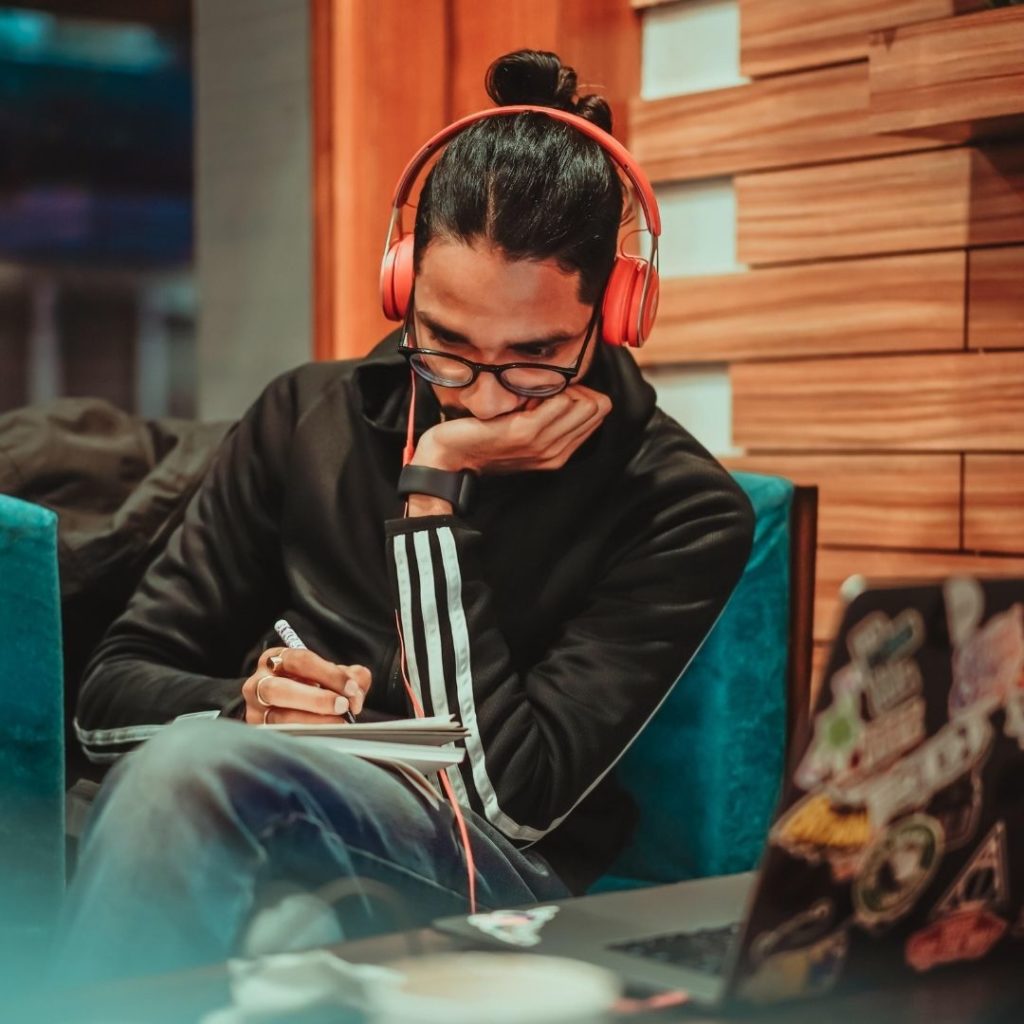SMOKEY BACKINGS & GIANT MIRRORS
Over the past few years, it seems to me that physical in-camera effects have been making something of a comeback. Apart maybe from large flagpole production films it seems to me that, possibly due to rising costs in post production, diminishing overall budgets or just because it’s trendy to do so………..projections, mirrors, cut-outs are all touring again like old 70’s rock bands. Backings and translights never really went away, but they did endure a deeply unfashionable phase, when it seemed we were fast heading for an all green or blue screen world, when even building sets was in question. By the way, anyone know why it’s all back to blue screen these days? Green screen seems to have largely died off……Mixed in with this old tech are new solutions resembling old back projections – AR walls projecting filmed images or even 3d rendered ones are replacing expensive post production bluescreen VFX…..or at least minimising the work required afterwards….
Sometimes DOP’s or Designers are the driving force behind it. Some are incredibly creative with in-camera lighting effects involving old theatre gauzes and projections, and can come up with some really off-the wall stuff.
However, sometimes the driving force turns out to be a little less to do with high creative ideals, and more to do with the ever – present clash between Art and financial reality….
On the Oliver Stone film ‘Snowden’ the use of cut-outs outside the Hong Kong MIRA Hotel set window had a slightly less creative gestation. Money, or the lack of it, was a huge problem for the film’s Producers, and therefore for everyone working on the film. There was a unique style of ‘film logic’ that led to myself and the prop master building skyscraper cut-outs from black foam board the day before the shoot. Early on the Producer had stated categorically that we were not permitted to build the set on a rostrum for cost reasons, and that anything seen out of the window would be either blacks, a plain grey cloth, or green screen. There would be no physical backing, and VFX would replace any views needed in post. This turned out to be wishful thinking when VFX reported that they had 5 shots budgeted, and that in 8 days of filming approximately 50 shots would be required. Oh crap. We couldn’t just burn the windows out for 8 days, in any case, we needed some night shots as well. I did a quick projection based on a photo from the real MIRA window, and calculated the size of cutouts that could work. It was a flawed process, as I could not be sure of the distance to the real buildings from the hotel, their actual height etc, and I had limited information about the original shot, and what kind of lens we would use on the day, distance from the window etc. Like all static backings, it’s all a bit of a guesstimate unless you can pick the camera position and lens. The result was not too bad when viewed through translucent drapes…. See picture below.
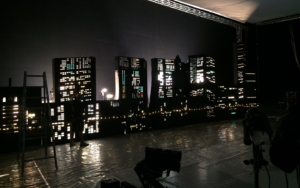
SNOWDEN – MIRA Hotel set – cut-outs outside window for night shot. Endgame Entertainment © 2015
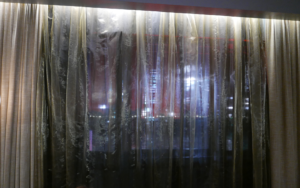
Incidently… another part of the set was only built after a protracted discussion with the Producer. He was insistent that we didn’t need to build a part of the corridor as a shoot-off piece outside the Hotel door, based on the compelling argument that he didn’t want to spend money he didn’t have. I gently but firmly put the alternative view that Oliver Stone, who is not known for tolerance or nonsense, was not going to be too impressed when shooting in a set for 8 days with one door, when we tell him he can’t open it more than 6 inches. Eventually he reluctantly, but gracefully, acquiesced, and agreed to a small portion of corridor being built, being so pleased with the logic of my argument that he wrote my name down in a black book, with a red pen for some reason… It’s good to feel your efforts are appreciated…
Mirrors used as set extensions are another old trick that we are currently using on a new NBC/SyFy/Netflix series that I’m currently working on, and we also used them for the film ‘The Commuter’. In both instances there was a logistical challenge of the size of mirror required-up to 7m x 5.5m (23ft x 18ft) in size. Eventually we found a company called Showtex, who were able to make foil mirrors on steel frames. (I’d be interested to know if any Guild members have other companies that can do this, so far there seems to be a choice of one.)
There were issues with this technology, especially the ones we had for The Commuter. The reflection, although potentially good, is not without distortion, especially in the corners, the foil is very delicate, does have subtle seams, it wobbles when touched and generally they are a slightly risky, but occasionally very worthwhile investment. We also tried a mirror frame that fitted inside the train carriage for ‘The Commuter’, with mixed results, because of the distortion. Used carefully and with a willing DOP, they can be a huge asset. If any Guild members want to try it, I’d recommend that they let the DOP come up with the idea of using them, and take the credit when they work, as they can be a bit tricky. In the end there were a number of times where the train and platform were usefully extended in camera, and I’m sure they more than paid their way. Here’s a couple of shots showing their use inside and outside the train carriages. I’d be interested to hear from any members who have used alternative options for giant mirrors….?
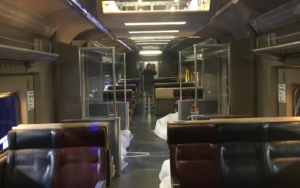
THE COMMUTER – Int. train carriage mirror. Studio Canal © 2016

THE COMMUTER – use of giant mirrors for a station scene. Studio Canal © 2016
As we only had 1 ½ carriages, (we’d planned on two complete carriages, but the stage wasn’t really big enough, and the DOP was struggling to light the full length) another potential saving was proposed in an early meeting. There was a small window in the doors between carriages and it was proposed that a small backing might be good instead of having to replace a blue window for every shot. Time for a cheap and cheerful photographic backing of the view of the carriage behind. Against my advice, (quite a technical shot to get the perspective and lighting working right) it was decided to shoot the image ‘in-house’, and so a nervous graphic designer with a decent camera and myself were thoughtfully allocated about 19 seconds at the end of rehearsal day on the dressed carriage while the DOP reluctantly gave us a day and night lighting state. Throughout this process the 1st stood on the carriage, radio in hand impatiently asking when we would be finished, after around 9 seconds of the shoot. The resulting images were predictably useless, and so a couple of days later I returned alone with my compact Leica to reshoot the images.
This time the DOP for the film helpfully shot some images himself with my camera, none of which we thought were useable. Maybe he underexposed them 3 stops for a very good reason, which will be instantly obvious to everyone who reads this, but we couldn’t work it out. Luckily, I’d managed to get a few images before he got his hands on my camera which in the end were the ones we used.
As I’d mentioned before, this wasn’t just an exterior shot, which can be tricky enough, but an interior of a train carriage, where we were trying to replicate a very distinctive perspective of long uniform rows of seats, luggage racks etc, and also trying to match to a subtly changing lighting state. Not easy, which is why I’d wanted to punt the job out. The punchline to this story is of course they didn’t just use the backings through the small window in the door, or even at the end of the next carriage along, but attempted to use them full on from a distance of about 10ft away. Someone influential in the camera dept, recommended printing the backing very soft, so naturally we printed them as pin sharp as they would go, and it’s lucky we did, because soft and hazy may work 25ft away through a window, but on the end of a train carriage jammed against a real set we didn’t think it would work…
Here is a trial fitting of one of our early prints, before we went through a protracted and never ending colour correction process……. Not too bad from a perspective point of view.
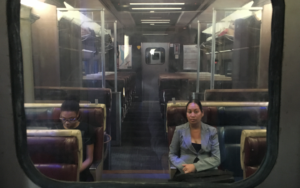
THE COMMUTER – trial fitting of photo backing. Studio Canal © 2016
Again on the production I’m working on currently shooting in Limerick, I’m hopefully not breaking the terms of my NDA by saying that giant mirrors may be playing a part at the end of some corridors, which have a helpful curve. Same issues again, although the corner distortion problem is much improved from last time the frames were built the wrong size by the construction company who then had to be persuaded that fixing them at their own expense might be good for their customer relations….In camera motion graphics are also being increasingly used, and for a change it seems they won’t all have to be replaced in post, possibly because screens are so much better these days…..
Knowledge of VFX issues seems to be greater on set than a few years ago, which overall is a good thing. VFX supervisors were once seen as mystical gurus by some producers whose word was law where green screen on set was concerned. A few years ago I worked on a film with an Oscar winning VFX supervisor, who insisted using a very expensive bright acid green paint for our green screen backings. This, he assured the production, would save money on the lighting package because the green screen would practically light itself. He wasn’t wrong. Everything for miles around was lit up by bright green light….Anything, of any colour, matt or gloss went green instantly. In vain we argued with the producer that the whole point of green screen is to provide a neat separation between set and green screen. We were told he knew best. We had to paint everything the colour of dull mud, and it still didn’t work. It must have cost millions to fix afterwards……………..
I personally enjoy the mix we have now of set building, on screen effects, and post production VFX, it would be nice for techniques like forced perspective, foreground miniatures, or miniatures and models in general to make a comeback before the skills that can produce them are completely gone. Although, even cheated perspective does crop up every now and then, particularly in the world of commercials…..
Has anyone used a glass shot lately? I’ve never seen one used on anything I’ve worked on, it would be nice to see that one make a comeback.
Any photos shown here should not be reproduced for any reason. Anything or anyone mentioned here is probably fictional and any resemblance to any person alive or dead is unintentional……
